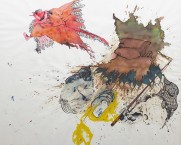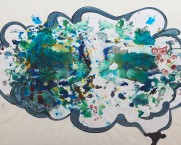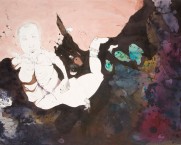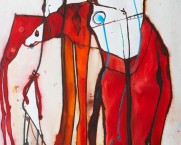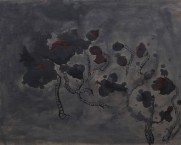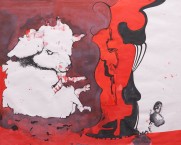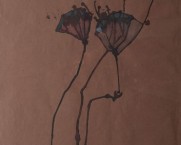C&L Shows
Peel
Minam Apang
2009
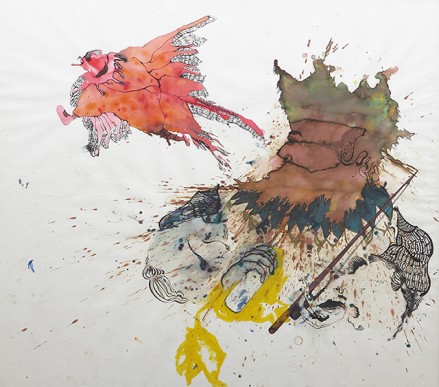
Overview
Peel emerged from the simple desire to make a fresh start, and to keep it simple this time. While she has in the past, worked largely with acrylics on canvas, occassionally also foraying into sculptural works made with found material, this time she chose to work on paper with water-based photo/fountain pen ink. Choosing the medium for its simplicity what began as playful ‘studies’, soon grew into a consolidated body of work. Soon after her first few exercises, she realised the beauty of working with ink: it offered her the spontaneity, fluidity and recklessness she sought. While working with acrylic/graphic design, for instance, her style tended to be very stark and relied on high- contrasts (reminiscent of pop and poster art). The first stage in her process involved staining the papers with accidental blots and allowing aleatory stains (like inks from another work seeping onto a fresh sheet of paper, footprints, or the stain left behind by an squatted mosquito) to function “as the basis to suggest a composition and as a means of stimulating the imagination.” These early stages have been decidedly liberating and cathartic : the act of pouring the inks to stain the paper was unrestrictive, and allowed her to loose herself to the movement of the action. After the inks were strewn across the paper, they were allowed to play with each other:by folding the paper, wet eith ink, to get mirrored blots, or throwing water, whisky,coffee, or coke (whatever as close at hand in her immediate environment) on the surface to facilitate mixing, she prepared the ground for a chaos of smudges and colour that would then be organised and engendered.
After the inks have dried, she says “the pen takes over, playing the role of an editor of sorts, shaping out images and forms from the marks and stains.” The initial stages of image- formation traced out the forms and images that come in mind in an immediate response to a given environmental stimulus or stain on the paper. However the forms that emerged may be seen as expressions of the artist’s emotional and intellectual processes without censorship.
Excerpt from a catalogue text by Nivedita Magar
- Works

